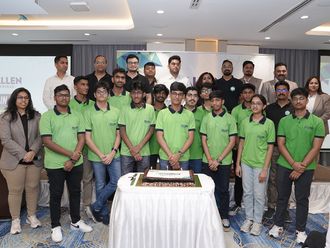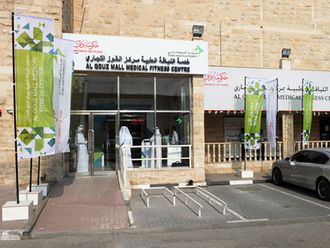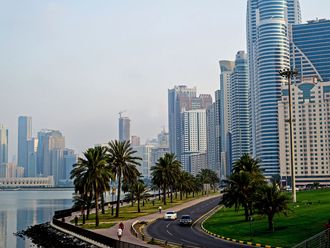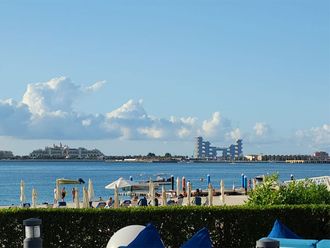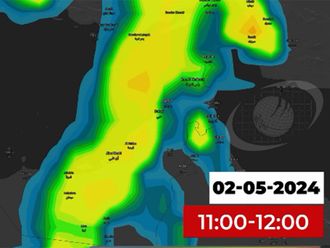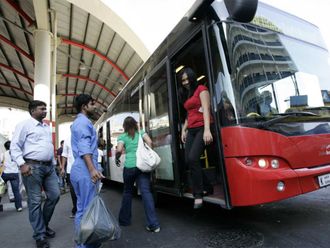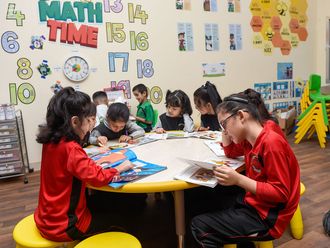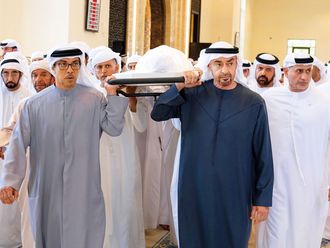Dubai-based laboratory does pioneering work in vet science
Every day is an adventure at the Central Veterinary Research Laboratory (CVRL) sprawled close to the Zabeel Stables in Dubai. The scientists find something new and different almost daily, researching and diagnosing diseases in animals as varied as the lion and the thoroughbred, the camel and the bee, the giraffe and the falcon.
"One animal brought me here and that is the camel," says Dr Ulrich Wernery, scientific director, CVRL, and a specialist in veterinary microbiology from Germany.
"I first had contact with the beautiful animal in Somalia in 1975. I was fascinated by the physiology of the animal and I said if ever I have the opportunity to work with camels, I'll take it. Twelve years later, I applied for this job and here I am."
The CVRL is the region's most important veterinary research and diagnostic centre. Fifty to 60 per cent of its work lies with camels, including ongoing research into the special benefits of camel milk.
"Dubai, and the UAE, has very valuable horses, camels and falcons, plus very valuable zoo animals such as gazelles and lions. Our job at the centre is to find out why an animal is sick or why it has died. Field veterinarians get us samples of blood, stools, skin, hair, milk as well as dead animals.
"The samples are directed to different departments. The results are ready in two-three days; a full report is then sent to the veterinarian," Dr Wernery explains.
The laboratory gets 350 blood samples a day and between 50 to 80 other samples. While its official working hours are 8.00am-4.00pm Saturday to Wednesday, there is always someone on duty "exactly like a hospital".
Founded by General Sheikh Mohammed bin Rashid Al Maktoum, Dubai Crown Prince and UAE Defence Minister, in 1985, the CVRL operates as a government diagnostic centre. It
co-operates directly with national and international veterinary services and plays an important regional role in the diagnosis, prevention, control and eradication of infectious animal diseases.
It has a 45-member, eight-nationality team including scientists, field veterinarians, technicians and administrative staff. Dr Ali Ridha is the administrative director of the laboratory. "Our most memorable moments are when Sheikh Mohammed himself comes to visit us," said Dr Wernery.
"When a valuable horse or falcon dies, he wants to see for himself the cause of the death. Sometimes he even helps us with the necropsy (animal autopsy). He is very interested in veterinary science and immediately understands what the problem is.
"He calls in his people and explains it to them so that they know how to prevent the disease in other animals. For us it is so important that someone above us supports us in our work."
The CVRL has made innovative scientific discoveries which have improved camel and falcon welfare. The vaccines developed include a breakthrough camelpox vaccine called Ducapox that is commercially produced in South Africa.
Camels are vaccinated at six and eight months for life-long immunity against the dreaded disease. The laboratory has also developed a vaccine against Newcastle disease in falcons, a falconpox vaccine and a falcon herpes virus vaccine.
Among the many conferences it has organised was an international equine conference in 1998.
| Dr Wernery (right) and Dr Kinne taking their blood samples of the camel at the CVRL. |
"In September, 20 scientists from across the world will be here to help us with the findings. We will conduct the important tests and trials here," says Dr Wernery.
Much of the CVRL's reputation rests on the speed and accuracy of its diagnosis. "One day, a veterinarian from Qatar phoned us. He had a sick gazelle in a private collection. This species is extremely rare. It lives in the wild in northern Somalia and is captive-bred only in Qatar. He flew in with a sample. We diagnosed the disease as a selenium deficiency. He flew back the same afternoon with the result and treated the animal with success," he remembers.
The CVRL also does pre-import and pre-export testing for horses. "All the horses that come in for the Dubai World Cup and any other international race event are tested. They go into quarantine for seven days. Only when they are free of notifiable diseases such as the African horse sickness can they go to the different stables," Dr Wernery explains.
The laboratory also tests horses that go out to other countries. It tests about 2,000 horses a year.
Dr Jörg Kinne, histopathologist, is another important member of the CVRL, bringing in his special knowledge of pathology to the diagnosis. He remembers diagnosing a rare falcon disease as one of his most challenging cases.
"We had a number of hunting falcons dying suddenly. They were sick for six hours and then dead. We did a post-mortem and found bleeding in the gut. We found the clostridia bacteria which produces a severe toxin. This was not known as a disease in falcons. We suggested the sick birds be treated with an anti-toxin given directly to the blood through the veins. Half an hour and they were feeling better," he says.
He also remembers diagnosing copper deficiency in a lion living in a private collection. "The lions were beginning to get lame. We discovered it was nothing more than copper deficiency. The deficiency was corrected and they got better," he says.
This learning, he emphasises, is what draws him to his profession. "You can still discover diseases, so much is not known."
Every day, clearly, is a scientific adventure at the Central Veterinary Research Laboratory.



